Steam cleaning is a popular method for deep cleaning carpets, but how exactly does it work and what are the benefits and risks associated with it?
We will explore the process of steam cleaning carpets, its advantages such as removing deep-set stains and killing bacteria, as well as potential drawbacks like the risk of damage to certain types of carpets and mold growth.
Find out tips on how to properly steam clean carpets and whether this method is effective for all types of carpets. Discover more about steam cleaning and its impact on your carpets.
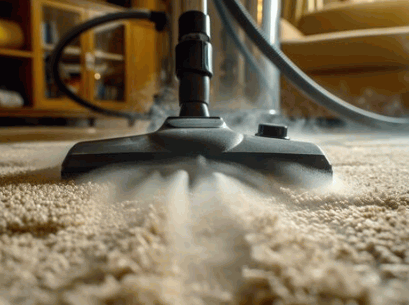
What Is Steam Cleaning?
Steam cleaning is a method of cleaning carpets using hot water extraction to remove dirt, stains, and bacteria. The process involves the use of a specialized machine that heats water to produce steam, which is then applied to the carpet fibers to loosen dirt and grime.
Steam cleaning is widely regarded as one of the most effective ways to deep clean carpets, ensuring a thorough removal of embedded debris and allergens. Unlike regular vacuuming, professional steam cleaning reaches deep into the carpet fibers, extracting dirt that is not visible to the naked eye.
The hot water extraction process is crucial in this method as it not only cleans the surface but also penetrates deep, eliminating germs and bacteria. It is especially beneficial for households with pets or children, ensuring a sanitary environment.
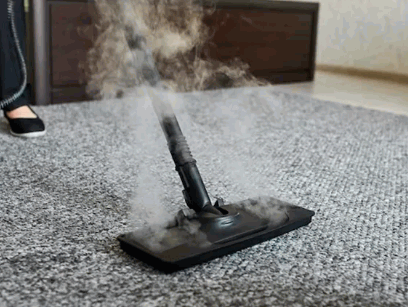
How Does Steam Cleaning Work On Carpets?
Steam cleaning works on carpets by using hot water and cleaning chemicals to break down dirt particles embedded in the carpet fibers. The extraction machine then removes the dirtied water, leaving the carpets clean and refreshed.
During the steam cleaning process, the hot water, often mixed with a specialized cleaning solution, is sprayed onto the carpet using a wand attachment connected to the steam cleaner. The combination of heat and chemicals helps to loosen and dissolve the stubborn dirt and stains within the carpet fibers. As the cleaning solution works its magic, the extraction machine, also known as a vacuum, swiftly suctions up the now-dirtied water along with the dislodged debris, effectively deep-cleaning the carpet.
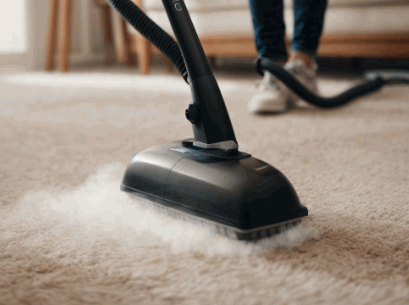
What Are The Benefits Of Steam Cleaning Carpets?
Steam cleaning offers several benefits for carpets, including the removal of deep-set stains, the elimination of bacteria and allergens, and the use of environmentally friendly cleaning chemicals.
One of the key advantages of steam cleaning is its ability to effectively break down and lift even the toughest dirt and grime from carpet fibers. The high temperatures generated during the process help to loosen and dissolve stains that have been lingering for a long time, making them much easier to extract. This thorough cleaning not only improves the overall appearance of the carpet but also extends its lifespan by preventing the accumulation of dirt that can lead to fiber deterioration.
Removes Deep-Set Stains And Odors
Steam cleaning effectively removes deep-set stains and odors from carpets by using specialized cleaning chemicals that penetrate carpet fibers to lift and eliminate the stains.
One of the key factors in the success of steam cleaning is the ability of these specialized cleaning agents to break down tough stains at a molecular level. By loosening the grip of the stains on the fibers, the cleaning process becomes more efficient and thorough. The high temperature of the steam not only sanitizes the carpet but also helps in dissolving stubborn residues that may contribute to lingering odors.
Kills Bacteria And Allergens
Steam cleaning not only removes visible dirt but also kills bacteria and allergens present in carpets, creating a healthier indoor environment. Professional cleaning companies often use hot water extraction to ensure thorough sanitization.
Steam cleaning with hot water extraction is crucial for eliminating harmful pathogens that can lurk deep within the carpet fibers, unseen to the naked eye. These microscopic invaders can trigger allergies and cause respiratory issues, making it essential to eradicate them for a truly clean living space.
Through the power of steam, professional cleaning services can effectively break down dirt and grime while simultaneously disinfecting and deodorizing the carpet, ensuring a fresh and healthy indoor ambiance for you and your family.
Environmentally Friendly
One of the key advantages of steam cleaning is its environmentally friendly nature, as it reduces the need for harsh chemicals and promotes a safer cleaning process. Using a steam cleaner minimizes chemical usage while effectively cleaning carpets.
Steam cleaning is particularly beneficial for households with children or pets, as it eliminates the risk of exposing them to harmful residues left by traditional cleaning agents. The high temperature of the steam not only cleans but also sanitizes surfaces, making it an ideal choice for maintaining a healthy home environment.
Along with reducing chemical waste, steam cleaning also conserves water, as it requires minimal liquid compared to other cleaning methods. This makes it a sustainable choice for those looking to minimize their environmental impact while achieving spotless results.
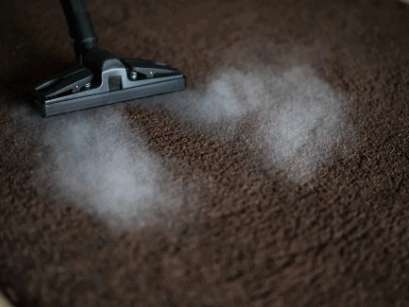
What Are The Potential Risks Of Steam Cleaning Carpets?
While steam cleaning has numerous benefits, there are potential risks involved, such as the risk of damage to certain types of carpets, the possibility of mold growth due to excessive moisture, and the potential for over-wetting carpets.
Damage to carpets during steam cleaning can be mitigated by first identifying the type of fabric and adjusting the steam intensity accordingly. For delicate carpets, consider using lower temperatures and shorter steam exposure to prevent any harm.
To prevent mold growth, ensure proper ventilation post-cleaning to allow carpets to dry completely. Using a dehumidifier in the room can help reduce moisture levels and inhibit mold formation.
Damage To Certain Types Of Carpets
Certain types of carpets, such as delicate or natural fiber carpets, may be susceptible to damage during steam cleaning due to the use of strong cleaning chemicals or hot water. It is essential to assess the carpet material before proceeding with steam cleaning.
Delicate carpets made from materials like silk, wool, or jute require extra care during cleaning to prevent potential harm from the steam cleaning process. These fibers can be sensitive to high temperatures and harsh chemicals, leading to discoloration, shrinkage, or fiber damage.
Choosing gentler cleaning solutions specifically designed for delicate fibers and maintaining a moderate water temperature can help safeguard the carpet’s integrity. Conducting a spot test on a small inconspicuous area before full steam cleaning can also ensure compatibility with the cleaning method.
Risk Of Mold Growth
Excessive moisture from steam cleaning can create a conducive environment for mold growth in carpets, especially if the extraction process is inadequate. Professional cleaning companies employ thorough extraction techniques to minimize the risk of mold development.
Effective water extraction is crucial in preventing the lingering dampness that mold thrives on. Without proper ventilation, even small amounts of moisture left behind can lead to mold proliferation. Professional services not only have powerful extraction equipment but also prioritize adequate ventilation during and after cleaning.
- Ensuring that all moisture is removed and the carpets are completely dry is paramount in mold prevention. This meticulous approach significantly reduces the likelihood of mold growth, safeguarding indoor air quality and the longevity of the carpet fibers.
Potential For Over-Wetting
Overwetting carpets during the steam cleaning process can lead to prolonged drying times, unpleasant odors, and the accumulation of dirtied water residues. Proper extraction and vacuuming techniques are essential to prevent over-wetting.
When carpets are over-wetted during steam cleaning, it not only hampers the overall efficiency of the cleaning process but also poses risks of mold and mildew growth. Excessive moisture trapped within the carpet fibers creates a breeding ground for these harmful microorganisms, leading to potential health hazards in the indoor environment.
To avoid such consequences, it is crucial to ensure thorough water extraction after the cleaning process. Utilizing high-quality extraction equipment and techniques can help in effectively removing excess moisture from the carpets, promoting quicker drying and preventing the development of musty odors.
Thorough vacuuming post-cleaning plays a vital role in maintaining the optimal moisture balance. By removing any remaining dirt particles and ensuring proper airflow, vacuuming helps enhance the drying process and prevent any residual moisture from lingering in the carpet fibers.
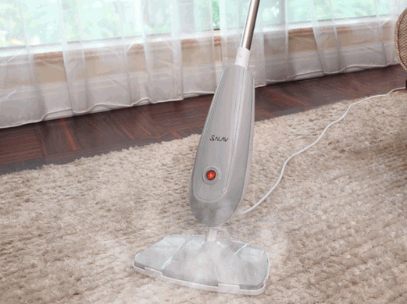
How To Properly Steam Clean Carpets?
Properly steam cleaning carpets involves several key steps, including thorough vacuuming, pre-treating stains, and high-traffic areas, using the correct amount of water and detergent, and allowing sufficient drying time for the carpets to dry completely.
Before beginning the steam cleaning process, it is essential to declutter the room and move any furniture that might obstruct the cleaning. This step ensures that the entire carpet surface is accessible for cleaning.
Next, carefully inspect the carpet for any stubborn stains and treat them with appropriate stain removers. It is recommended to use a high-quality carpet shampoo or detergent that is specifically formulated for steam cleaning.
A common mistake to avoid is oversaturating the carpet with water, as it can lead to longer drying times and potential mold growth.
Vacuum The Carpet Thoroughly
Before steam cleaning, it is crucial to vacuum the carpet thoroughly to remove surface dirt, dust, and debris. A high-quality vacuuming machine can help ensure a clean base for the steam cleaning process.
Regarding achieving optimal carpet cleanliness, proper vacuuming techniques play a vital role. Thorough vacuuming not only removes visible dirt but also helps eliminate hidden dust particles nestled deep within the carpet fibers.
One effective tip is to slowly pass the vacuum over each section multiple times, especially in high-traffic areas. Remember to empty or replace the vacuum bag regularly to maintain its suction power.
Using attachments for crevices and edges can ensure no area is left untouched, while going over the carpet in different directions can help lift stubborn debris.
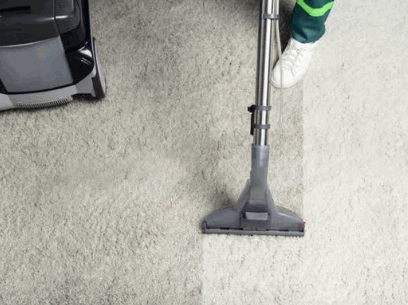
Pre-Treat Stains And High-Traffic Areas
Addressing stains and high-traffic areas before steam cleaning can enhance the overall cleanliness and freshness of the carpet. Utilizing the appropriate chemicals and techniques for pre-treatment ensures better stain removal and restoration of carpet appearance.
Regarding treating stains before steam cleaning, it’s like giving your carpet a head start toward rejuvenation. By tackling those persistent marks and heavily trafficked spots in advance, you pave the way for a thorough cleaning process that leaves your carpet looking and feeling revitalized.
Choosing the right cleaning chemicals is crucial in this process. Opt for products specifically designed for pre-treatment purposes to effectively break down tough stains without causing damage. Employing suitable techniques such as blotting and gentle agitation can further aid in loosening the stubborn residues embedded in the fibers.
Use The Correct Amount Of Water And Detergent
The correct balance of water and detergent is crucial in steam cleaning to ensure effective dirt extraction and thorough cleaning. Using proper steam temperature and the right extraction method can prevent residue buildup and promote a deeper clean.
When water and detergent are properly mixed, it creates a powerful cleaning solution that can break down stubborn stains and grime on various surfaces. Maintaining the ideal steam temperature not only aids in loosening dirt but also ensures that germs and bacteria are effectively eliminated.
Extraction machines play a key role in the cleaning process by swiftly removing the loosened residue and dirty water, preventing re-contamination of the cleaned area. This step is vital in achieving pristine results and preventing potential damage caused by leftover cleaning agents.
Gain insights: What’s The Best Carpet Cleaning Solution
Allow Sufficient Drying Time
After steam cleaning, it is essential to allow sufficient drying time for the carpets to air dry completely. Using a wand or hot air blower can expedite the drying process and prevent moisture-related issues such as mold growth.
Proper drying time plays a crucial role in maintaining the cleanliness and longevity of carpets. By ensuring thorough drying, you can prevent the accumulation of dirt and bacteria that thrive in damp environments. Additionally, accelerating the drying process helps in restoring the carpet’s resilience and texture. It is recommended to keep the room well-ventilated during the drying phase to facilitate moisture evaporation.
Can Steam Cleaning Be Used On All Types of Carpets?
While steam cleaning is effective for many carpet types, it may not be suitable for all. Natural fiber carpets, synthetic carpets, and wool carpets each have specific cleaning requirements that should be considered before applying steam cleaning.
Steam cleaning is particularly well-suited for synthetic carpets as they can withstand high temperatures and moisture, making it easier to remove dirt and grime. Regarding natural fiber carpets like jute or sisal, excessive heat and moisture from steam cleaning can damage the delicate fibers. Therefore, for natural fiber carpets, dry cleaning methods or spot cleaning with gentle detergent solutions are more appropriate to prevent damage.
Natural Fiber Carpets
Natural fiber carpets, such as jute or sisal, require special care during the steam cleaning process to prevent damage to the delicate fibers. Using gentle extraction methods and suitable cleaning chemicals is essential for maintaining the carpet’s integrity.
When considering cleaning natural fiber carpets, it’s crucial to opt for extraction techniques that are careful and soft on the fibers. Harsh methods can lead to breakage or unraveling of these delicate materials. The choice of cleaning chemicals plays a significant role in preserving the quality and appearance of the carpet. Mild, natural-based cleaners are often recommended to prevent discoloration or fiber damage.
Preserving the natural beauty of these carpets during cleaning involves regular vacuuming to remove surface dirt and debris. Spot cleaning should be done promptly with a gentle cleaning solution specifically designed for natural fibers. Avoid saturating the carpet and instead, use a minimal amount of the cleaning solution for targeted stain removal.
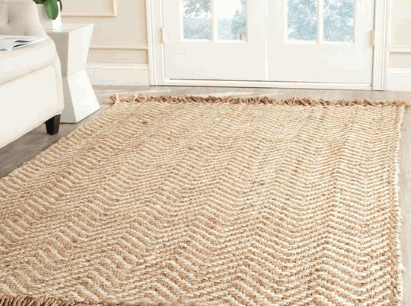
Synthetic Carpets
Synthetic carpets, including nylon or polyester, are more resilient to steam cleaning but still require proper maintenance to avoid over-wetting or residue buildup. Thorough vacuuming and using the right cleaning chemicals are crucial for effective cleaning results.
Regarding cleaning synthetic carpets, one essential consideration is to never overwet the fibers, as excessive moisture can damage the carpet backing and promote mold growth. Routine vacuuming is key to preventing dirt and debris from settling into the carpet and causing matting or discoloration. Using appropriate cleaning chemicals, specifically formulated for synthetic carpets, helps to break down stains without leaving behind harmful residues that can attract more dirt.
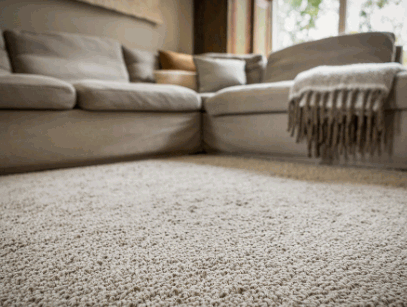
Wool Carpets
Wool carpets are sensitive to moisture, making them prone to mold growth if not properly dried after steam cleaning. Thorough vacuuming and using specialized machinery for extraction are essential steps in preserving the quality of wool carpets.
Regarding steam cleaning wool carpets, one of the biggest challenges lies in ensuring thorough drying to prevent mold growth. Due to the natural fibers of wool, excess moisture can seep deep into the carpet, creating a breeding ground for mold if left untreated. To tackle this issue, it is crucial to invest in high-quality extraction equipment specifically designed for wool fibers. These machines can efficiently remove excess water without damaging the delicate fibers.
Along with specialized machinery, a thorough vacuuming regimen is crucial to maintaining the integrity of wool carpets during cleaning. It helps to eliminate any dust, dirt, or debris trapped within the fibers that could potentially retain moisture and lead to mold formation. Regular vacuuming not only aids in preventing mold growth but also helps to extend the lifespan of the carpet by keeping it clean and well-maintained.
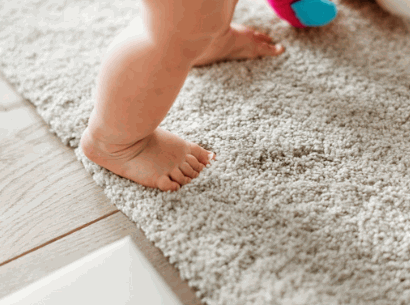
Conclusion: Is Steam Cleaning Effective For Carpets?
In conclusion, steam cleaning proves to be an effective method for cleaning carpets, offering deep cleaning, stain removal, and allergen elimination. When performed correctly, the steam cleaning process can extract dirt and grime, leaving carpets fresh and revitalized.
One of the key benefits of steam cleaning is its ability to penetrate deep into the carpet fibers, reaching dirt and grime that traditional vacuuming may miss. This thorough cleaning process not only removes visible stains but also eliminates hidden allergens trapped within the carpet.
Proper extraction during steam cleaning helps in removing excess moisture, reducing the risk of mold and mildew growth. By effectively tackling stubborn stains and odors, steam cleaning plays a pivotal role in maintaining clean and healthy carpets, and enhancing indoor air quality.

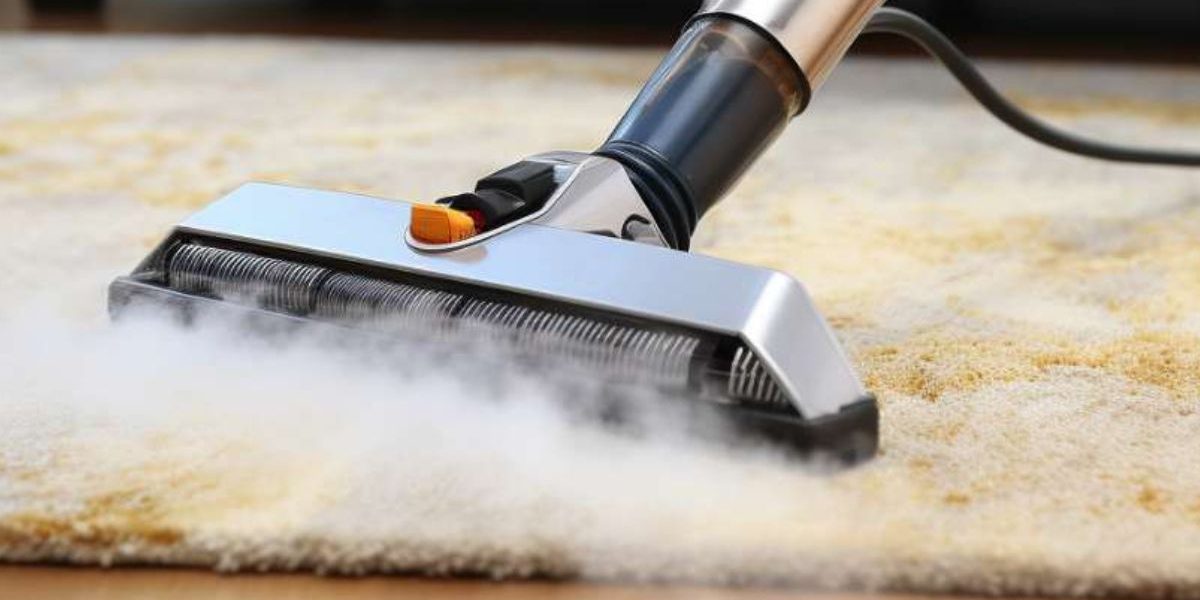
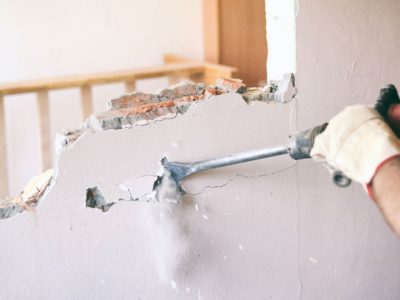


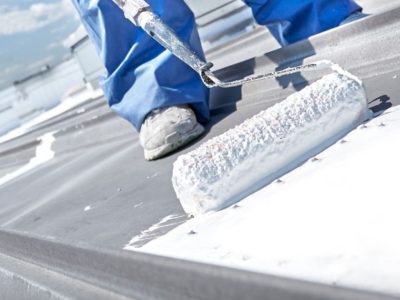

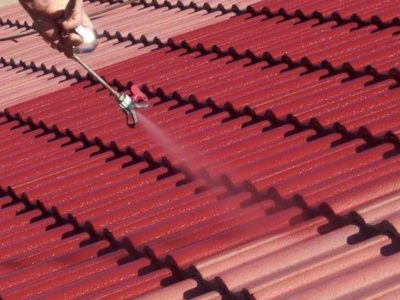

Comments